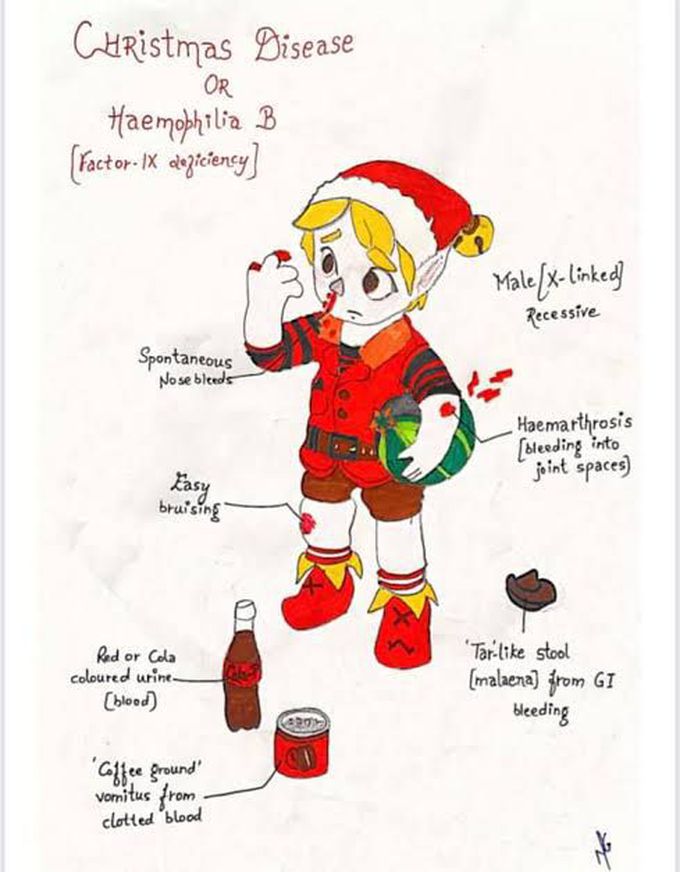


Causes of christmas disease
Hemophilia B is a genetic bleeding disorder. If you have hemophilia B, it means you inherited an abnormal gene that affects the amount of clotting factor 9 in your body. Normally, a gene called F9 carries instructions on how to create factor 9. Hemophilia B happens when that gene mutates and becomes an abnormal gene that leads to low factor 9 levels or even missing factor 9. Men or people DMAB inherit hemophilia B if their biological mothers carry the condition. Here’s how that happens: Everyone receives two X chromosomes from their biological mother and one X chromosome and one Y chromosome from their biological father. If a woman or person DFAB has an abnormal F9 gene on one of their X chromosomes, they carry hemophilia B, but they won’t have symptoms. That’s because there’s a normal F9 gene on their second X chromosome. This person can pass the chromosome carrying the abnormal F9 gene on to their biological male child. As men and people DMAB have just the one chromosome, they’ll develop hemophilia B. Hemophilia B may happen without passing from mother to son through a process called spontaneous mutation. In spontaneous mutation, the embryo created when an egg and sperm combine starts to divide and produce more cells. The new cells contain copies of the genes in the single cell, and sometimes, mistakes or mutations happen during the gene copying process. If there was a mistake when the F9 gene was copied, your child may have hemophilia B or carry hemophilia B. (Historians and medical researchers believe that was the case with Queen Victoria of England. Queen Victoria had hemophilia even though no one in her family had the disease. She passed the disease on to her children. When those children married into royal families in Spain and Russia, they passed the condition on to their children. That condition was later identified as hemophilia B.)

